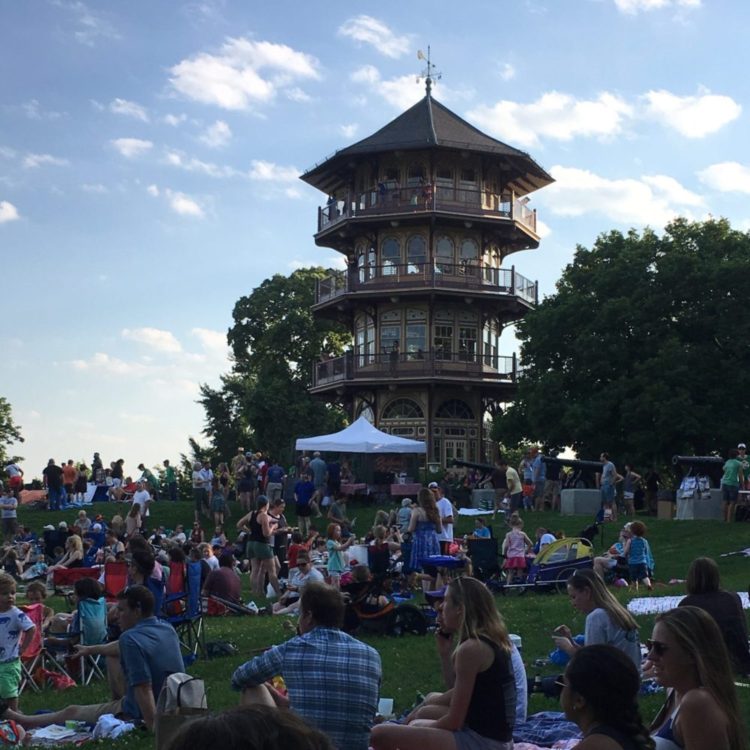As those who live near Patterson Park benefit from any improvements at Patterson Park, funding of improvements should be aimed at those individuals. Creation of a special benefits district can accomplish this goal. Essentially such a district would create a Patterson Park special benefits district – much like the business interest districts currently used in Baltimore. Funding would derive from an assessment on property value within the district boundaries. Proceeds from this special benefits district would then provide the needed funding for maintenance and operations with the corresponding benefit going to those park users and property owners who live in the surrounding neighborhoods.
Special benefits districts for parks have been established in various communities throughout the country.[1] Some of these tax districts rely on sales taxes but the majority rely on property taxes to fund parks.[2] For instance, San Francisco utilizes “green benefit districts” to fund park maintenance and capital improvements in several park districts through a levy on real property within district boundaries.[3] New York City has utilized “business interest districts” to fund several parks through property tax levies combined with other revenue sources.[4] In addition, successful special benefits districts for park systems using property taxes as a primary funding method exist in Charleston, South Carolina, Alameda and Contra Costa counties in California and St. Louis, Missouri among a variety of other jurisdictions.[5]
One of the biggest advantages of developing a special benefits district for a park is funding consistency.[6] The revenue from any special benefits district is constant allowing for better financial planning and management. The creation of financial and management plans was precisely the operational improvements recommended in Patterson Park’s Master Plan.[7] By establishing a consistent stream of revenue, maintenance and governance of the park can be managed on an active basis using long-term strategies instead of implementing short-term fixes.
[1] Seattle, Wa., Ordinance No. 124634 (2014); John Crompton, The Impact of Parks and Open Spaces on Property Taxes 1, Trust for Public Land at 18-20 (Constance T.F. de Brun ed., 2007), http://cloud.tpl.org/pubs/benefits_econbenefits_landconserve.pdf; Margaret Walls, Resources for the Future. Private Funding of Public Parks, Assessing the Role of Philanthropy 16-17 (2014) http://www.rff.org/files/sharepoint/WorkImages/Download/RFF-IB-14-01.pdf.
[2] Walls, at 16 (noting that Charleston, South Carolina, Oakland, California, Alameda County, Calif. Columbus, Ohio, use property taxes supplemented with “revenues generated from everything from cottage and campsite rentals to concerts, races and music festivals.”).
[3] Minneapolis Park and Recreation Board, Closing the Gap: Public and Private Funding Strategies for Neighborhood Parks 25-26 (2015), https://www.minneapolisparks.org/_asset/11bxwt/Closing-the-Gap—Public-and-Private-Funding-Strategies-for-Neighborhood-Parks-10-21-15.pdf.
[4] Christopher Rizzo, Alternative Funding for an Equitable Park System in New York City and State, 32 Pace Envtl. Law Rev. 635, 651-52 (2015). Minneapolis Park and Recreation Board at 29-30; Michael Murray, Private Management of Public Spaces: Nonprofit Organizations and Urban Parks, 34 Harv. Env’t. Law Rev. 179, 230-40 (2010) (describing the history of New York City’s Bryant Park and associated business interest district).
[5] Walls, at 16-17.
[6] Walls, at 17-18.
[7] Patterson Park 2016 Master Plan at 46-48 https://drive.google.com/file/d/0BzmWPd92eAaWcWlBU3B3c3d1dmc/view. .
[8] Patterson Park 2016 Master Plan at 46-48.

Be the first to comment on "No. 11 – Advantages of creating a special benefits district for Patterson Park"